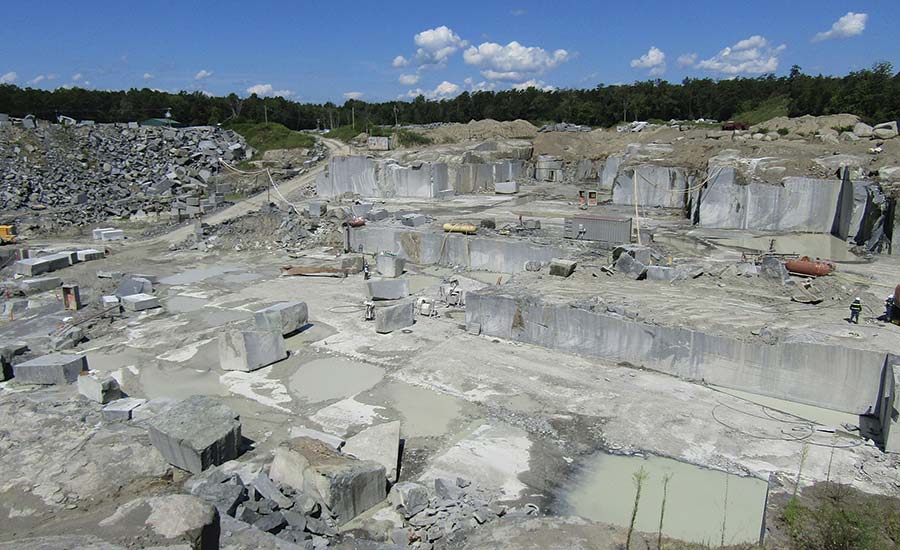Checking Out Granite Quarries in South Africa: A Comprehensive Overview
Checking Out Granite Quarries in South Africa: A Comprehensive Overview
Blog Article
Unearthing the Rich History and Lasting Practices of Granite Quarrying
As we stand on the precipice of discovering the complex tapestry of granite quarrying, a journey via time exposes not just the physical act of extracting rock however also the social and historic value woven into the extremely fabric of this practice. From the ancient beginnings that laid the foundation for contemporary quarrying methods to the sustainable techniques that are forming the future of this market, each sculpt mark on granite surfaces narrates waiting to be unearthed (granite quarries in south africa). The heritage of granite quarrying stretches far past mere extraction; it is a testimony to human ingenuity, durability, and the enduring allure of this magnificent stone
Old Beginnings of Granite Quarrying
Going back to ancient people, the method of quarrying granite has been an integral component of human background and architectural development. The earliest evidence of granite quarrying days back to old Egypt, where enormous pyramids and elaborate sculptures were crafted from this resilient stone. The Egyptians made use of primitive tools to remove granite blocks from quarries, showcasing the value of this material in their huge constructions.
Moving on in background, the Greeks likewise made considerable payments to the quarrying of granite. The Greeks utilized granite in various building wonders, such as temples and statuaries, demonstrating their ability in shaping and sculpting this hardy stone. The Romans further improved the techniques of quarrying granite, utilizing sophisticated tools like chisels and hammers to remove and shape granite for their famous frameworks.
Via the centuries, the practice of quarrying granite has progressed, with modern-day technologies enhancing efficiency while keeping the timeless charm of this natural stone - granite quarries in south africa. From old people to contemporary building contractors, the tradition of granite quarrying proceeds to shape our globe
Evolution of Quarrying Methods
The evolution of quarrying methods has actually been marked by a continual progression in the direction of greater effectiveness and accuracy in extracting granite. From the basic techniques utilized by our ancestors to the sophisticated technologies made use of in modern-day quarrying operations, the sector has undertaken significant improvements. Early quarrying methods involved manual labor with fundamental devices such as chisels, hammers, and wedges to extract granite blocks from the earth. As human beings progressed, methods like fire-setting and primitive nitroglycerins were presented to facilitate the removal procedure.
In more recent times, the advent of machinery changed the quarrying market, making it possible for faster extraction rates and increased productivity. Technologies such as diamond wire saws, high-pressure water jets, and pneumatic drills have become conventional in modern-day quarries, permitting exact cutting and lowered waste. Innovations in computer-controlled equipment and 3D modeling have actually enhanced quarrying procedures, leading to minimal ecological influence and improved sustainability methods. As the need for granite remains to increase, the advancement of quarrying techniques stays indispensable to conference industry needs effectively official site and sustainably.
Cultural Value of Granite
Granite holds a profound cultural importance throughout different human beings as a result of its long-lasting visibility in building work of arts and revered monuments. From the magnificent pyramids of Egypt to the elaborate carvings of the Angkor Wat temple in Cambodia, granite has been a material of choice for expressing splendour and longevity in cultural heritage. In ancient Rome, granite columns decorated holy places and public buildings, symbolizing strength and durability. The cultural significance of granite extends beyond its physical features; it symbolizes strength, stability, and eternity, making it a symbol of withstanding legacies and customs.

Sustainable Practices in Quarrying
Among the rich history of granite quarrying and its cultural importance lies a growing emphasis on sustainable practices within the industry. As ecological understanding and Look At This concerns concerning source exhaustion have actually enhanced worldwide, the quarrying sector has actually progressively embraced lasting approaches to decrease its influence on the setting and surrounding communities.

Moreover, recovery and rehabilitation of quarry sites post-extraction are important to lasting practices. By bring back quarried locations to an all-natural or advantageous state, such as producing wildlife environments or recreational areas, quarriers can offset the ecological footprint of their operations and contribute positively to the local ecosystem.
Heritage of Granite Quarrying
With a historical background steeped in workmanship and commercial progression, what enduring effect has granite quarrying left on the landscape of modern-day society? The tradition of granite quarrying goes beyond plain extraction methods; it has actually formed architectural marvels, metropolitan landscapes, and social heritage worldwide. The sturdy nature of granite has made it a recommended selection for monuments, buildings, and framework, standing as a testimony to the ability and virtuosity of quarry workers across generations.
Furthermore, the financial impact of granite quarrying can not be forgotten. The industry remains to supply employment possibility and drive local economies in areas where granite removal prevails. It has actually likewise spurred technological advancements in quarrying techniques and equipment, leading to extra reliable and lasting methods.
In terms of sustainability, the heritage of granite quarrying consists of efforts to reduce environmental influences through reclamation jobs and liable source monitoring. By balancing economic passions with ecological stewardship, the industry makes every effort to guarantee that future generations can proceed to benefit from this long-lasting natural deposit.
Final Thought

Report this page